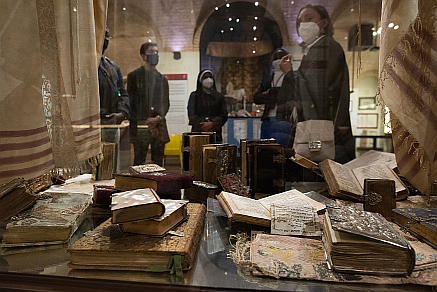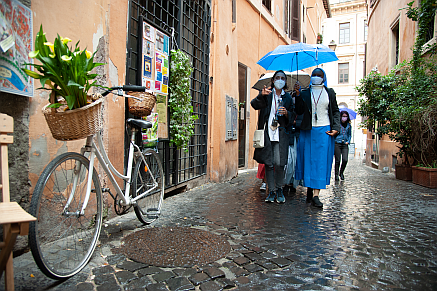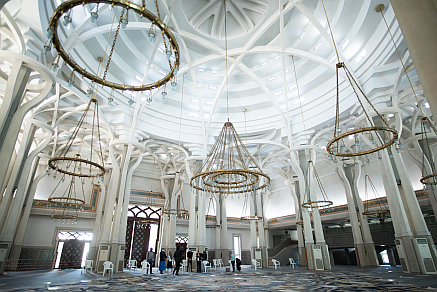Traditionally, the Russell Berrie Fellows manage to visit a number of sites and offices during their stay in Rome. We strongly believe that meeting with people of other faith communities, visiting their places of worship, listening to people who have been engaged for a long time in interreligious dialogue, are a necessary complement to the academic training and knowledge.
During the month of May, now that some restrictions due to the pandemic have been lifted in Rome thanks to the decreasing number of Covid-19 cases, we were able to organize a few visits for the Fellows who managed to make their way to Rome.
On May 6, we walked to the Vatican to meet with Father Norbert Hofmann, SDB, Secretary for the Commission for Religious Relations with the Jews at the Pontifical Council for Christian Unity. A longtime expert of Jewish-Catholic dialogue, Father Hofmann reminded the Fellows that the Nostra Aetate Declaration during the II Vatican Council was a milestone for relationships between Jews and Catholics. This document, he said, was “an absolute yes to Jewish roots of Christianity and an absolute no to antisemitism.”
While the group was hosted at the conference room of the Pontifical Council, Father Hofmann explained the complex and fascinating history of relations over the past decades between these two very diverse communities, underlining how a sense of humor and friendship are key to the development of this dialogue.
 |  |
The week later, the Fellows had a walking tour in the Jewish quarter of Rome with a professional guide who led them through the characteristic streets of this neighborhood unveiling centuries of history. The Jewish community of Rome, now counting around 15,000 members, predates the common era. In fact, Jews arrived in Rome in the II century BCE. Thanks to the visit of the Jewish museum, Fellows discovered the different stages the Jewish Roman community had to go through over the centuries until the terrible time of the Shoah. The visit at the beautiful Rome Great Synagogue offered the chance to hear about the most recent developments in Jewish-Catholic encounters, above all the historic visit of Pope John Paul II in 1986, the first time of a Pope in a Synagogue. He was welcomed by the Chief Rabbi of Rome, then Rabbi Elio Toaff, with whom, the guide explained, Pope John Paul II maintained for his whole life a deep friendship.
 |  |
Finally on May 20, 2021, the Fellows were welcomed at the Great Mosque of Rome by Imam Yahya Pallavicini who showed them the beautiful architecture of this space which was – at the time it was built – the biggest mosque in Europe. For some of the Fellows it was the first time entering a mosque and Imam Pallavicini described some of the practical and symbolic elements of a mosque as well as the ritual practice of prayer. Different from a church setting, decorations in a mosque usually revolve around geometry and calligraphy and the Great Mosque of Rome is a beautiful example of that.
After the visit, Imam Pallavicini took the time to answer a wide range of questions from the Fellows going from the Muslim presence in Rome to the issue of places of worship in majority Muslim countries.
